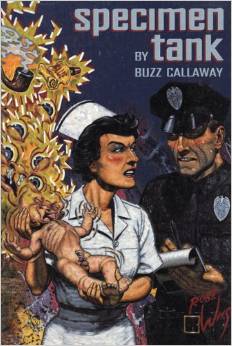Early Indonesian Commerce and The Nanhai Trade
 Early Indonesian Commerce and the Nanhai Trade
Wang, Gungwu.
The Nanhai trade : early Chinese trade in the South China Sea
Singapore : Eastern Universities Press, 2003.
xviii, 165 p. : maps ; 23 cm.
(JOURNAL OF THE MALAYAN BRANCH OF THE ROYAL ASIATIC SOCIETY. (COVERING THE TERRITORIES OF THE FEDERATION OF MALAYA, THE STATE OF SINGAPORE, THE COLONIES SARAWAK AND NORTH BORNEO, AND THE STATE OF BRUNEI ). THE NANHAI TRADE. A STUDY OF THE EARLY HISTORY OF CHINESE TRADE IN THE SOUTH CHINA SEA, 1958)
Wheatley, Paul.
The Golden Khersonese; studies in the historical geography of the Malay Peninsula before A.D. 1500.
Kuala Lumpur, University of Malaya Press, 1961.
xxxiii, 388 p. illus., maps (part fold.) 23 cm.
Wolters, O. W.
Early Indonesian commerce: a study of the origins of SriÃŒvijaya.
Ithaca, N.Y., Cornell University Press [1967]
404 p. maps. 24 cm.
Wolters Obituary link: http://einaudi.cornell.edu/SoutheastAsia/outreach/SEAPbulletin/bulletin_sp02/SEAPBulletinSpring2002.pdf
Before Paul Wheatley’s The Golden Khersonese there was Wang Gungwu’s The Nanhai Trade. Following these works was O.W. Wolter’s Early Indonesian Commerce. These three works, written between 1958 and 1963, are pivotal in the evolution of South East Asian Studies away from Sino- and Indocentric, Great Civilization histories and towards what would become Area Studies, histories written from the perspectives of the various peoples of South East Asia.
Beginning in the 1930’s, writers like JC van Leur, 1908-1942, (On Early Indonesian Trade, and other writings, translated into English and compiled under the title, Indonesian Trade and Society in 1954) and Paul Mus, 1902-1969 ( see: http://en.wikipedia.org/wiki/Paul_Mus, and: http://caliber.ucpress.net/doi/pdf/10.1525/vs.2009.4.1.145 ), were exploring Southeast Asian history and society from the point of view of those countries themselves. Van Leur is said to have introduced sociological and economic theory into his studies, whereas before most writing had been confined to descriptive art history and archaeology. At the same time, Georges Coedes (http://www.nla.gov.au/asian/form/coedes2.html ), with his paleographic and multi-linguistic researches into Angkor, Funan, Chenla, Champa, Majapahit, Srivijaya etc., was laying the groundwork for his, and other traditional historians (like DGE Hall, to whom Early Indonesian Commerce is dedicated), later syntheses, resulting in books like the monumental (and for 40 years, standard textbook on the region) Les eÌtats HindouiseÌs d’Indochine et d’IndoneÌsie (published in French, in Hanoi, in 1944, and translated into English in 1968).
Coedes and Hall and others of their generation thought and wrote, like the Chinese historians, in terms of empires, kings and capitals. Coedes advanced the thesis that India and China brought civilization to this part of the world by directly colonizing it, a view expanded upon by Indian historians like Majumdar. Before the Indian colonization of the Austronesian world, according to this line of thinking, people there were ruled by petty chieftains who had no ability to organize beyond tribal affiliation, and were certainly not capable of the advanced art, architecture, trade and learning that were in slight but undeniable evidence in Sumatra, Java, Borneo, Vietnam, Cambodia and Malaysia. And there were grounds for thinking this. The earliest remains of writing in the region are either in Chinese or Sanskrit-based scripts. The religions were Buddhism and various forms of Hinduism and related tantric traditions. Government structure, law, mythology, literature, court dress and decorative motifs were seen as being inferior derivatives of Indian originals, brought by Brahmin colonizers. Coedes et al were merely writing about that part of the world the way any sane person would have written about Europe: the history of the spread of great civilizations out of Greece, Rome and, later, Christendom.
But India and China were also the engines of trade, and it is easy to see events in the South China Sea as being shaped by the needs of these two giants. In 1958 Wang Gungwu (http://en.wikipedia.org/wiki/Wang_Gungwu) published The Nanhai Trade, which charts the early history of trade along the South China Coast, from the area of Canton down through Vietnam and the Cham lands. He relates events in this region, which was colonized and dominated by China to varying degrees from the Han Dynasty on, to the major events affecting the empire to the north, and explains the development of the sea trade as being an indigenous activity that expanded and contracted in response to courtly demand and conditions on the overland route, the Silk Road. By indigenous he means people who were not yet Chinese. He defines a cultural region, locates it on the one hand at the periphery of the Chinese world, and on the other as being at the center of a world of commerce, radiating out towards the Philippines to the east and Vietnam, Linyi and Champa to the west and south. The Canton region comes alive with Persian and Arab traders, Yueh ships engaged in short term trading and raiding. What he describes is a freewheeling, rebellious and cosmopolitan world in constant flux. The Nanhai Trade is a short, perfectly narrated history, suggestive of much detail but disciplined in its refusal to speculate.
Wang (who is still alive) was born in Indonesia of a Chinese family and has spent his entire career teaching in Malaysia and Singapore. He is the first major native historian of the region I’ve read. His later work has been about overseas Chinese, not the early history of Asia. This sets him apart from the other authors here, and it perhaps accounts for both the perspective and importance of his book. When The Nanhai Trade was reprinted in 1998 he decided it needed no revision, though he did not agree with everything he had written. It is a testament to his good judgment, then and now. The book’s strengths of adherence to fact, of modest interpretation and of breadth of conception in such a short space remain, and Wang’s book, like the others I’m considering, appears in nearly every bibliography I have read relating to the period and subject. It is still impossible to write intelligibly about the region and trade without reference to this book.
I have written about Wheatley in another post, so I will only say here that his work of historical geography followed some years later and established the toponyms, at least provisionally, that had been argued about for a century. He built on Coedes extraordinary scholarship and through scrupulous and close reading proposed locations along the coasts of the Malaysian Peninsula, Java and Sumatra that could be reconciled with the practical exigencies of a flourishing sea trade. This act of naming is essential in establishing a local and regional history. It restores the names to the land, a land that due to climate consumes so much that in other places would remain to tell the story of its people. It takes what had become a dry and contentious argument among amateur and professional scholars about the meaning and pronunciation of words into the real world. It set the ground for what would become a boom in Area Studies, an increasingly particular, granular study of the region, with local language and custom moving to the fore. And it allowed Wolters to locate Srivijaya in the 7th century on the coast of Sumatra, in the modern cities of Palembang and Jambi.
In 1918 Coedes proposed that the toponym Srivijaya, found on stone inscriptions, was the same place as the Chinese San Fo Chi. But where Srivijaya actually was, was in dispute. Wolters sets out to describe what was happening on the other end of the Nanhai trade. What was being traded to China and by whom? The answer is that the natives of the river mouths and harbours of Sumatra, Java, Borneo and Malaysia, the Malays and others, were storing and transporting goods that at first came from India, Persia and Arabia: frankincense, myrrh and other pine resins in particular. Later, they began substituting exotic forest products of their own, which the Chinese in turn began to demand in their own right. And the first polity to really seize control of this trade was Srivijaya. He traces the rise of Srivijaya by closely reading Chinese medicinal writings in addition to the usual dynastic histories, with their tribute missions and brief anthropological descriptions of exotic natives. And he also draws heavily on I Tsing’s account of living in Palembang in 671, which was at the time a lively center of Buddhist learning.
Wolters was a remarkable man, and I have included a link to a lengthy obituary in the online publication of the South East Asia Program (SEAP) at Cornell, where he taught from 1964 till he retired in the late 80’s. I did not know him or meet him but every day he arrived here at Olin Library, his hat mashed down on his head. Wolters, like Paul Mus, George Coedes, and JC Van Leur, was a civil servant. In his case he was stationed in Malaysia from 1937-1957 when he retired and returned with his wife to England. He was interred by the Japanese during the war and after the war was deeply involved with the Malayan Emergency, a communist insurgency that the British spent 10 years fighting. That war has been often cited as the model for a successful anti-insurgency campaign, most recently in discussions about Iraq. Wolters was fluent in Malaysian and Chinese (both Cantonese and Mandarin). He had studied the early history of the region, such as it was known, in the 1930’s. All of this indicates that regardless of how one views the politics of anti-insurgency, the success of such a policy depends upon having civil servants and military leaders who are knowledgeable and sympathetic to the culture, history, language and concerns of the people. Mus, for instance, lived through the Japanese occupation of Vietnam and spent the rest of his life after the war as a fierce opponent of French Colonial rule. Van Leur was killed in the Battle of the Java Sea.
Wolters went on to do much more important work. After writing a second book on Indonesia, The Fall of Srivijaya and the Malay World he made a major theoretical contribution to Asian Studies with his concept of the mandala state and charismatic leadership. He then went on to literary-historical studies, reading Vietnamese poems written by court officials in 13th century, Tran Dynasty Viet Nam. Anyone interested in his later work will be able to read it in publications of Cornell’s SEAP, where you will also find posted a downloadable PDF of an incomplete, unpublished manuscript on Tran Vietnam he left. I will of course discuss his work on Viet Nam later.
The movement towards specific, local histories and the endless debates about Orientalism that have characterized the past 30 years of Asian Studies opens up the question of parochialism and nationalism taking the place of the big and meaningless generalities, the Super Power centrisms of the past. A later generation of researchers has and is discovering broader, more unifying concepts, again focusing on trade and state formation. Anthony Reid and Viktor Lieberman come to mind. They are bringing a world systems perspective to the empirical findings earlier writers, expanding the regional context to include events in Africa, Europe and the Americas, only this time as an actor and contributor to world culture and not just as a passive recipient of more advanced technologies and ideologies developed elsewhere. But that statement in itself is an abstraction and gets me away from the primary concern here, the history of Vietnam and Champa. About which, more later.
Â
Â
Â



